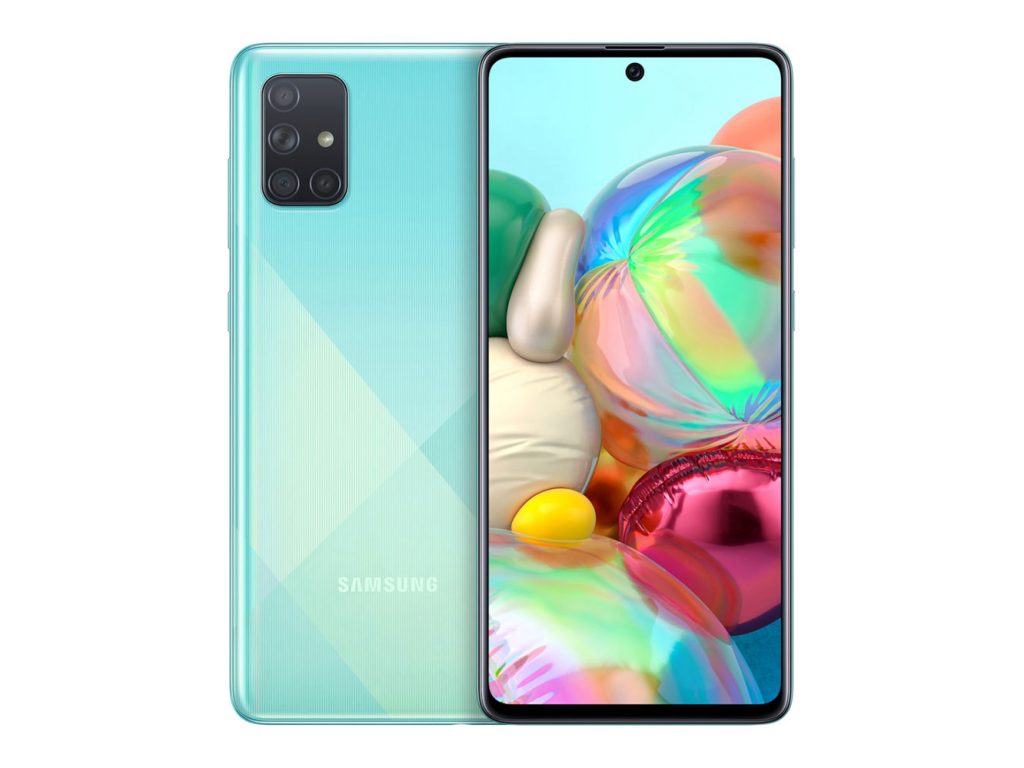The Samsung Galaxy A71 is a mid-range device designed for Samsung fans who are not quite prepared to spend their money on S- or Note-series smartphones, but still want a device that can perform when needed. It features a quad-camera setup on the back and a 6.7-inch Super AMOLED display with FHD+ resolution. The Android operating system is powered by a Snapdragon 730 chipset and the battery comes with a 4500mAh capacity.
The front camera uses a 32MP Quad-Bayer sensor and pixel-binning technology to produce 8MP output files. Light is channeled through a f/2.2-aperture lens with a 26mm-equivalent focal length and a fixed focus. In video mode, the camera can record 1080p footage at 30 frames per second.
We recently tested the Samsung Galaxy A71’s main camera in our DXOMARK Camera test. Now let’s see how its front camera performs under our DXOMARK Selfie protocol.
Key front camera specifications:
- 32MP 1/2.8-inch sensor with 0.8µm pixels
- 26mm-equivalent, f/2.2-aperture fixed-focus lens
- 1080p/30fps video
- Qualcomm Snapdragon 730 chipset
About DXOMARK Selfie tests: For scoring and analysis in our smartphone front camera reviews, DXOMARK engineers capture and evaluate over 1500 test images and more than 2 hours of video both in controlled lab environments and in natural indoor and outdoor scenes, using the camera’s default settings. This article is designed to highlight the most important results of our testing. For more information about the DXOMARK Selfie test protocol, click here.
Test results


With an overall DXOMARK Selfie score of 83, the Samsung Galaxy A71 occupies a mid-table position in our ranking but performs better than most of the devices in its class that we have tested to date.
The A71 achieves a Photo score of 83, thanks to images with generally good exposure in all light conditions and a wide dynamic range. Target exposure can be slightly low in backlit scenes, though, and our testers also observed some minor exposure instabilities in challenging high-contrast scenes. Color is not a particular strength of the A71 front camera, with white balance casts often visible in bright light and under tungsten illumination. Images can sometimes also be slightly undersaturated, but on the plus side, color shading is well under control.
The fixed-focus lens means that sharpness is best at a subject distance between 50 and 60cm. At closer or longer distances—for example, when shooting with a selfie stick—a drop in sharpness is noticeable. A fairly narrow depth of field also means that people at the back of group selfies can be slightly out of focus. On the plus side, the level of captured detail is good in bright light in the in-focus areas of the frame, and noise is well controlled. There is quite a drastic drop in detail and an increase in noise when shooting in low light, however. Images also show some artifacts—for example, ringing and halo effects are visible under close inspection.

The A71 front camera offers a background-blurring bokeh simulation mode, but as there is no secondary camera, the function relies purely on software processing. The results can make for a nice effect, but don’t look as natural as on best-in-class devices: depth-estimation artifacts are visible around the subject and the background blur has no gradient.
In video mode, the A71 camera can record clips with a 1080p Full-HD resolution at 30 frames per second and scores a respectable 82 points. Skin tones are generally rendered nicely in video clips, and as long as you don’t record in low light, detail is well preserved. Noise levels are low in most conditions, too. However, there are also a few areas for improvement: the stabilization system is not the best we have seen, and hand or walking motion tends to be noticeable in video clips. Further, we observed some underexposure in video clips shot in bright light or under typical indoor conditions. Video clips also show the same narrow depth-of-field issues as still images, and some artifacts are visible in video footage, too.
Conclusion
The Samsung Galaxy A71’s front camera is capable of capturing decent selfie images and video in most conditions. Its single-lens fixed-focus camera is not quite on the same level as current high-end devices with autofocus-systems and more efficient stabilization, but the Samsung is one of the better mid-rangers we have tested under our Selfie protocol. This said, if you are after top-end front camera performance in a mid-range device, the Huawei nova 6 5G currently remains your best option.
Photo
Pros
- Usually good target exposure on face in indoor and outdoor conditions
- Pretty good detail when image is well focused
- Low noise levels on faces when shooting in bright light
- Wide dynamic range
Video
Pros
- Generally pleasant skin tones
- Good detail in outdoor and indoor conditions
- Well-controlled noise in most conditions
Cons
- Inefficient stabilization system
- Occasionally low target exposure in bright light and indoors
- Target exposure is sometimes low in indoor and outdoor conditions
- Narrow depth of field means faces in the back of group shots are out of focus
- Scene integrity artifacts








DXOMARK encourages its readers to share comments on the articles. To read or post comments, Disqus cookies are required. Change your Cookies Preferences and read more about our Comment Policy.